Day #14 Budapest Hungry Part 1 (Page Nineteen)
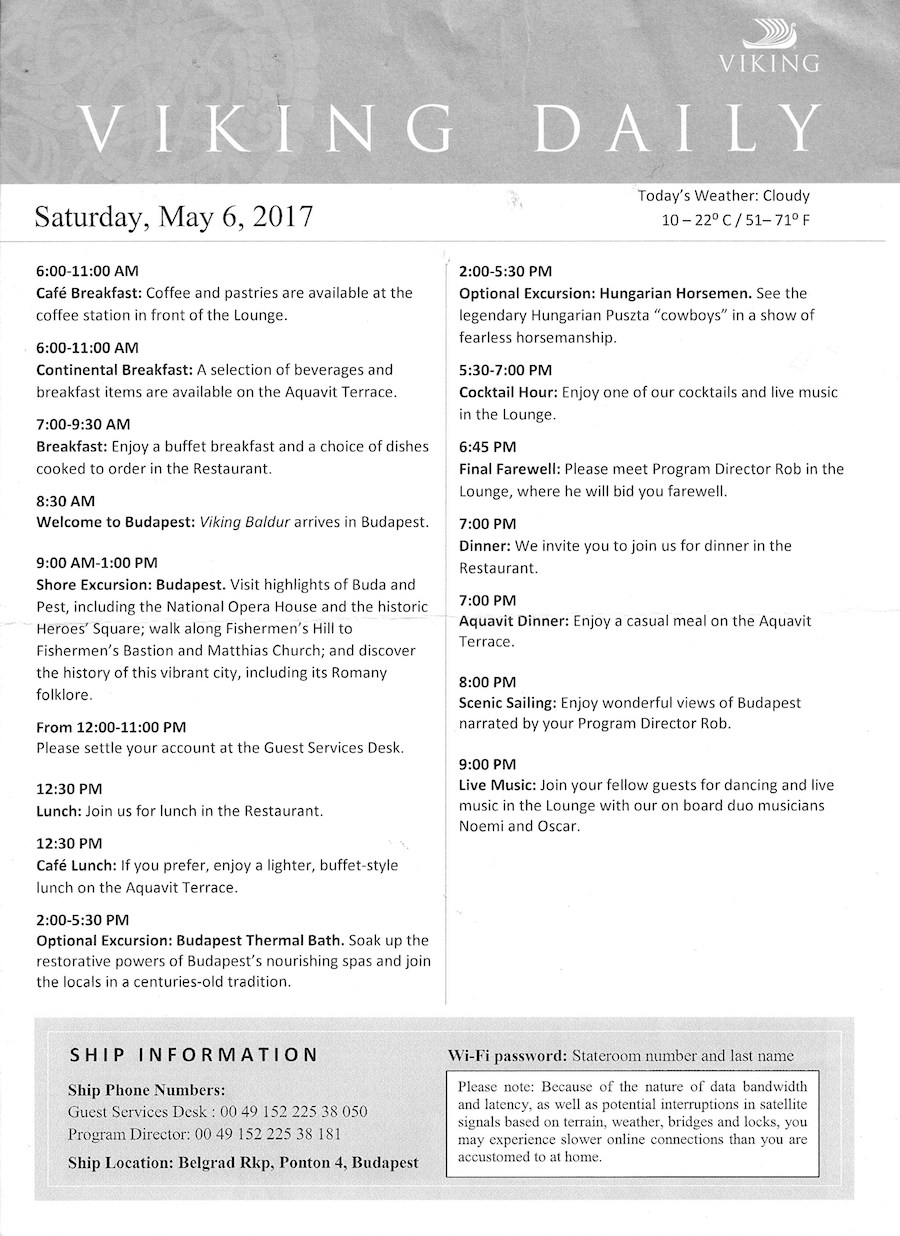
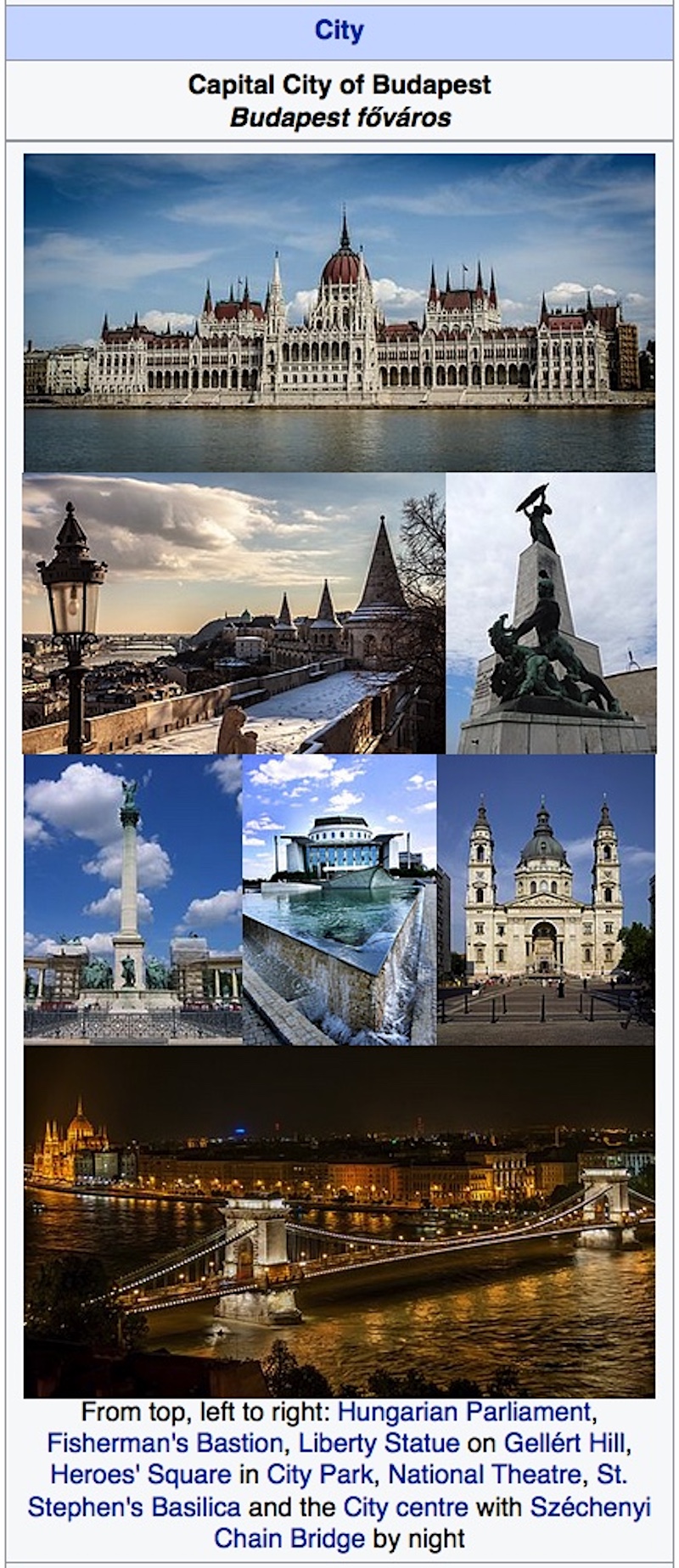

8:30 AM in the morning as we glide into our port

Wonderful views as we pass by the city - Passing the Parliament Building
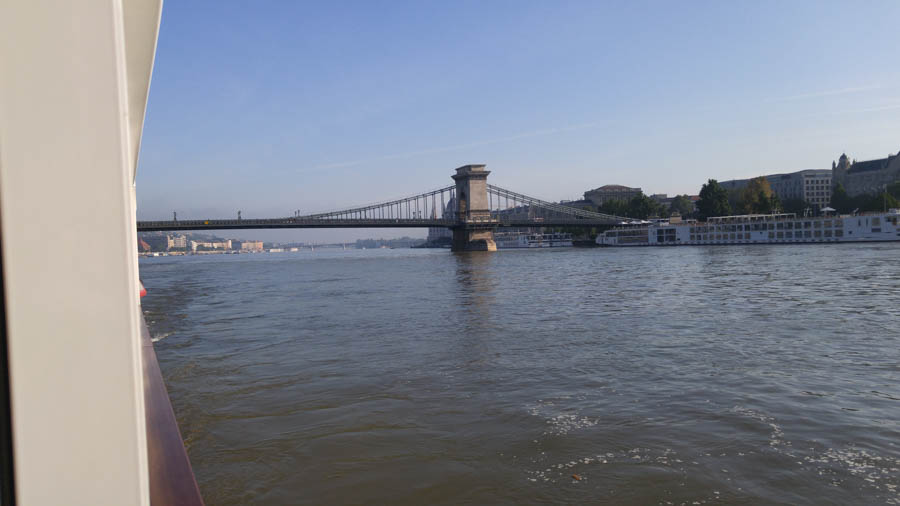
Széchenyi Chain Bridge
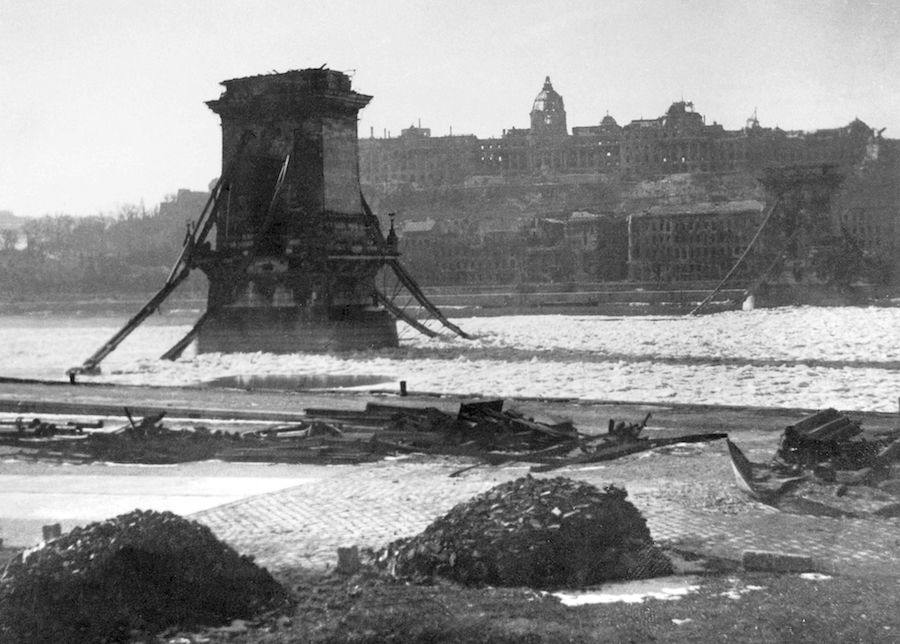
The remains post WWII
Did You Know? - The Széchenyi Chain Bridge is a suspension bridge that spans the River Danube between Buda and Pest, the western and eastern sides of Budapest, the capital of Hungary. Designed by the English engineer William Tierney Clark and built by the Scottish engineer Adam Clark, it was the first permanent bridge across the Danube in Hungary. It was opened in 1849.
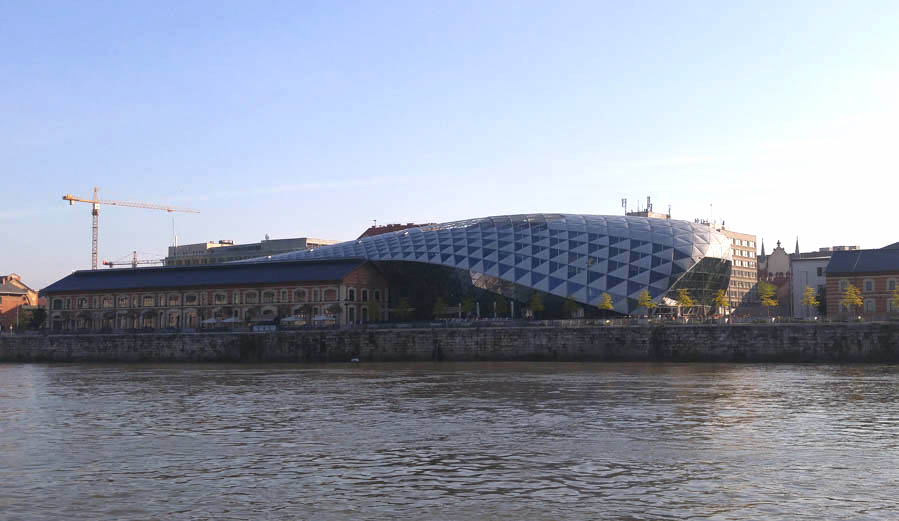
The modern meets the ancient
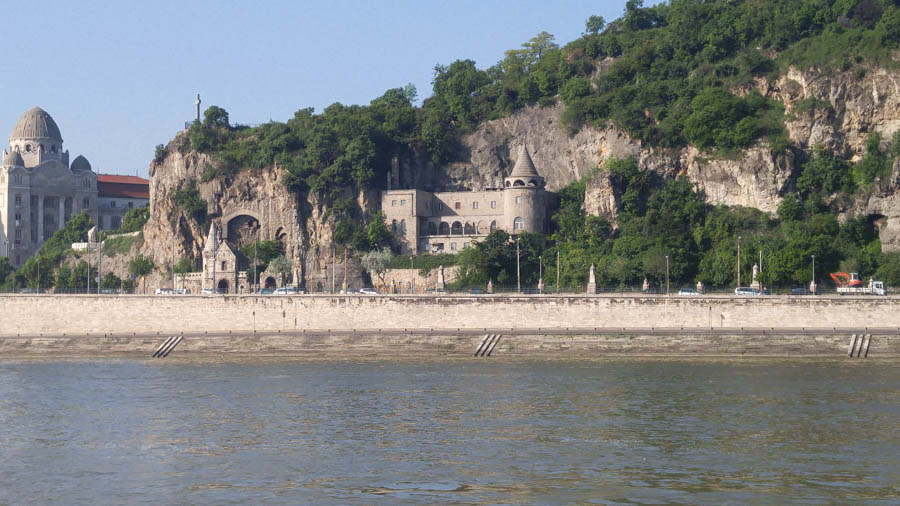
Built into the mountain!

Our ship is tied up and awaiting our return

Hotels line the waterway

We pass by neighborhoods located on the river

The Budapest Opera House (Click for full sized image)
Did You Know? - The Hungarian State Opera House (Hungarian: Magyar Állami Operaház) is a neo-Renaissance opera house located in central Budapest, on Andrássy út. Originally known as the Hungarian Royal Opera House, it was designed by Miklós Ybl, a major figure of 19th-century Hungarian architecture. Construction began in 1875, funded by the city of Budapest and by Emperor Franz Joseph I of Austria-Hungary, and the new house opened to the public on the 27 September 1884. It is the second largest opera house in Budapest and in Hungary.
It is a richly-decorated building and is considered one of the architect's masterpieces. It was built in neo-Renaissance style, with elements of Baroque. Ornamentation includes paintings and sculptures by leading figures of Hungarian art including Bertalan Székely, Mór Than and Károly Lotz. Although in size and capacity it is not among the greatest, in beauty and the quality of acoustics the Budapest Opera House is considered to be amongst the finest opera houses in the world.
The auditorium holds 1,261 people. It is horseshoe shaped and – according to measurements done in the 1970s by a group of international engineers – has the third best acoustics in Europe after La Scala in Milan and the Palais Garnier in Paris.[citation needed] Although many opera houses have been built since, the Budapest Opera House is still among the best in terms of the acoustics.

..and around the corner is modernism!
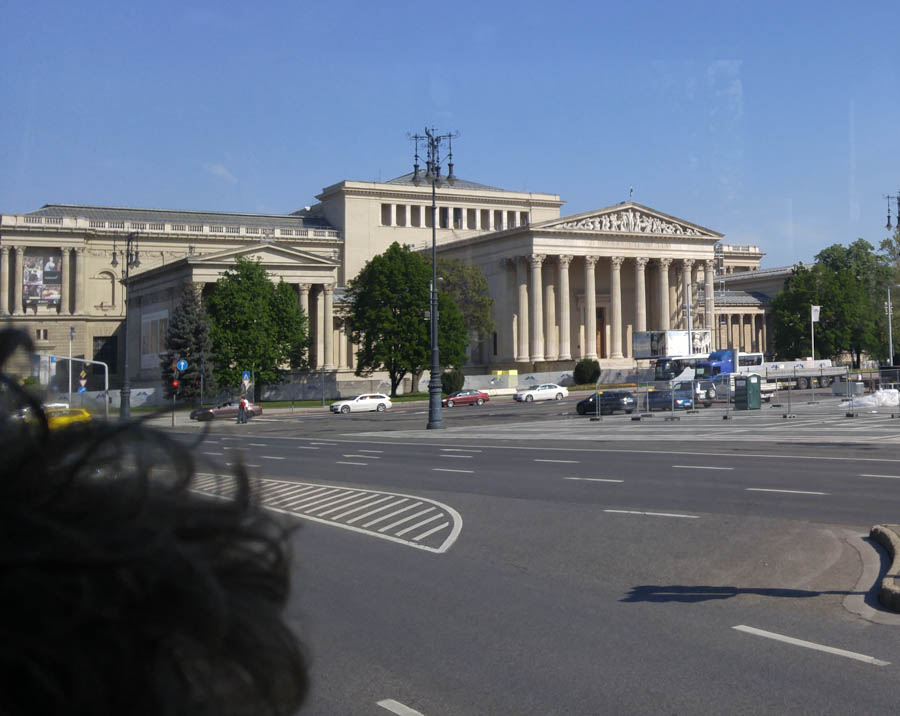
The Museum of Fine Arts
Did You Know? - The Museum of Fine Arts is a museum in Heroes' Square, Budapest, Hungary, facing the Palace of Art.
It was built by the plans of Albert Schickedanz and Fülöp Herzog in an eclectic-neoclassical style, between 1900 and 1906. The museum's collection is made up of international art (other than Hungarian), including all periods of European art, and comprises more than 100,000 pieces. The collection is made up of older additions such as those from Buda Castle, the Esterházy and Zichy estates, as well as donations from individual collectors. The Museum's collection is made up of six departments: Egyptian, Antique, Old sculpture gallery, Old master paintings gallery, Modern collection, Graphics collection. The institution celebrated its centenary in 2006.
On February 16, 2015, the museum closed to the public for renovation. It is expected to reopen in March 2018, after three years of work. In the meantime, a selection of works are housed in the Hungarian National Gallery.

Tomb of the Unknown Soldier (See the full sized image)
Did You Know? - Hősök tere is one of the major squares in Budapest, Hungary, noted for its iconic statue complex featuring the Seven Chieftains of the Magyars and other important national leaders, as well as the Tomb of the Unknown Soldier. The square lies at the outbound end of Andrássy Avenue next to City Park (Városliget). It hosts the Museum of Fine Arts and the Műcsarnok. The square has played an important part in contemporary Hungarian history and has been a host to many political events, such as the reburial of Imre Nagy in 1989. The sculptures were made by sculptor Zala György from Lendava.

The top of the column depicts Archangel Gabriel, who holds the Hungarian Holy Crown and the apostolic double cross in his hands

Back on the buss
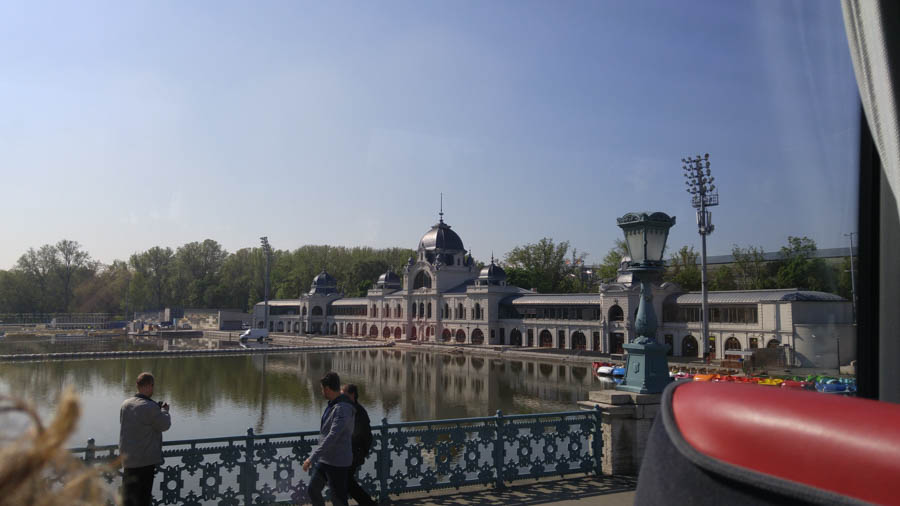
The bus was excellent in terms of window size!

Government buildings are protected by fences

The Dohány Street Synagogue

Did You Know? - The Dohány St. Synagogue in Budapest. It is the largest Synagogue in Europe and can house 3 000 people. In the 18th century, Jews were banned from Budapest and so, they set up a Jewish Quarter outside the city's boundaries at the time, which is now part of Pest. This synagogue was built in the 19th century, between 1844 and 1859.
Built with many of the characteristics of Christian churches, it is a particularly unusual Synagogue. The synagogue has two onion-shaped domes in the Byzantine-Moorish style, which are ment to represent the two columns of Solomon's Temple.
During the Second World War, the Nazi established a ghetto for Jews in 1944 and, in addition to those who were deported, thousands died due to the diseases and illnesses that spread on the difficult winter in the ghetto.
They are buried in Mass graves behind the synagogue. The synagogue itself was used as military base for the Nazis when they were in Hungary and the building was greatly damaged in that period. In recent years, a huge restoration project was completed.

On the road again...

Need exercise?

Overlooking the city
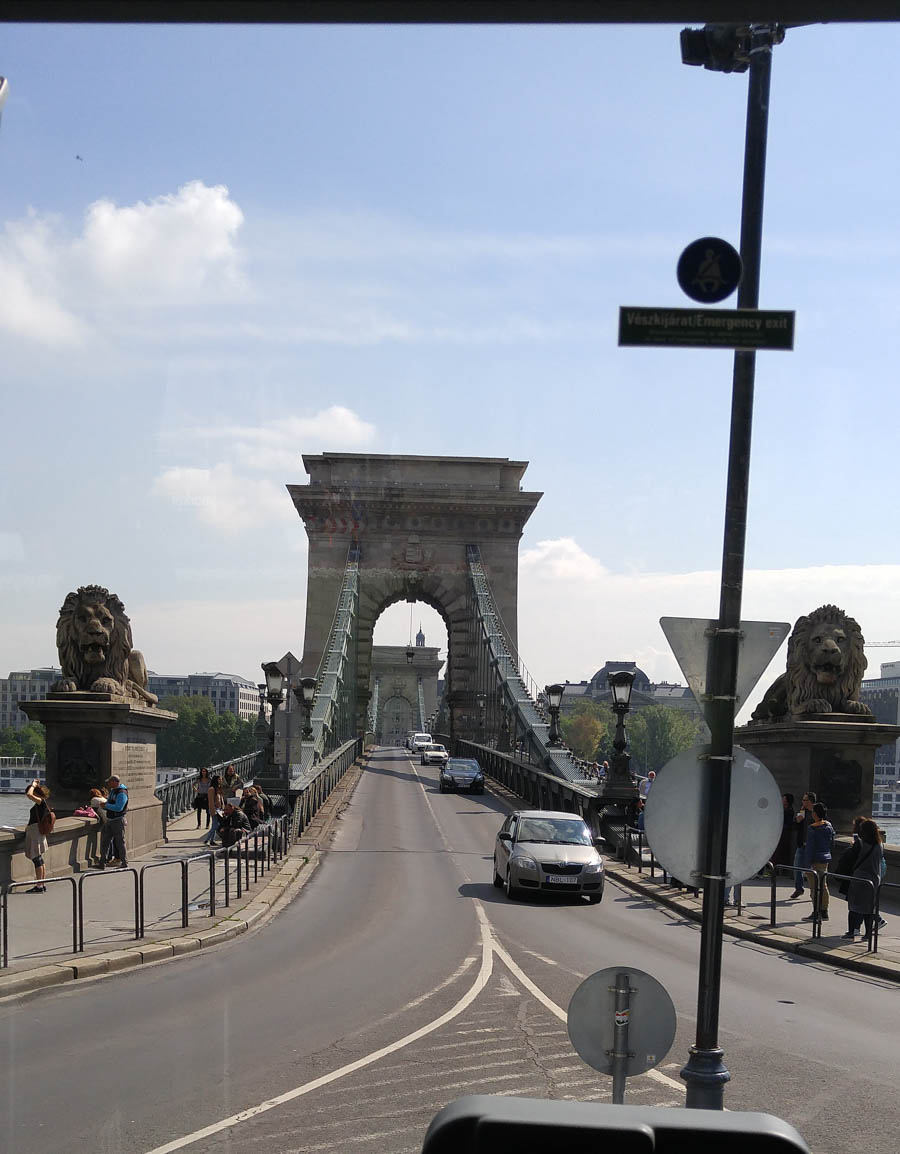
Crossing the Chain Bridge
Did You Know? - The Széchenyi Chain Bridge is a suspension bridge that spans the River Danube between Buda and Pest, the western and eastern sides of Budapest, the capital of Hungary.

Matthias Church

Out tour guide was excellent
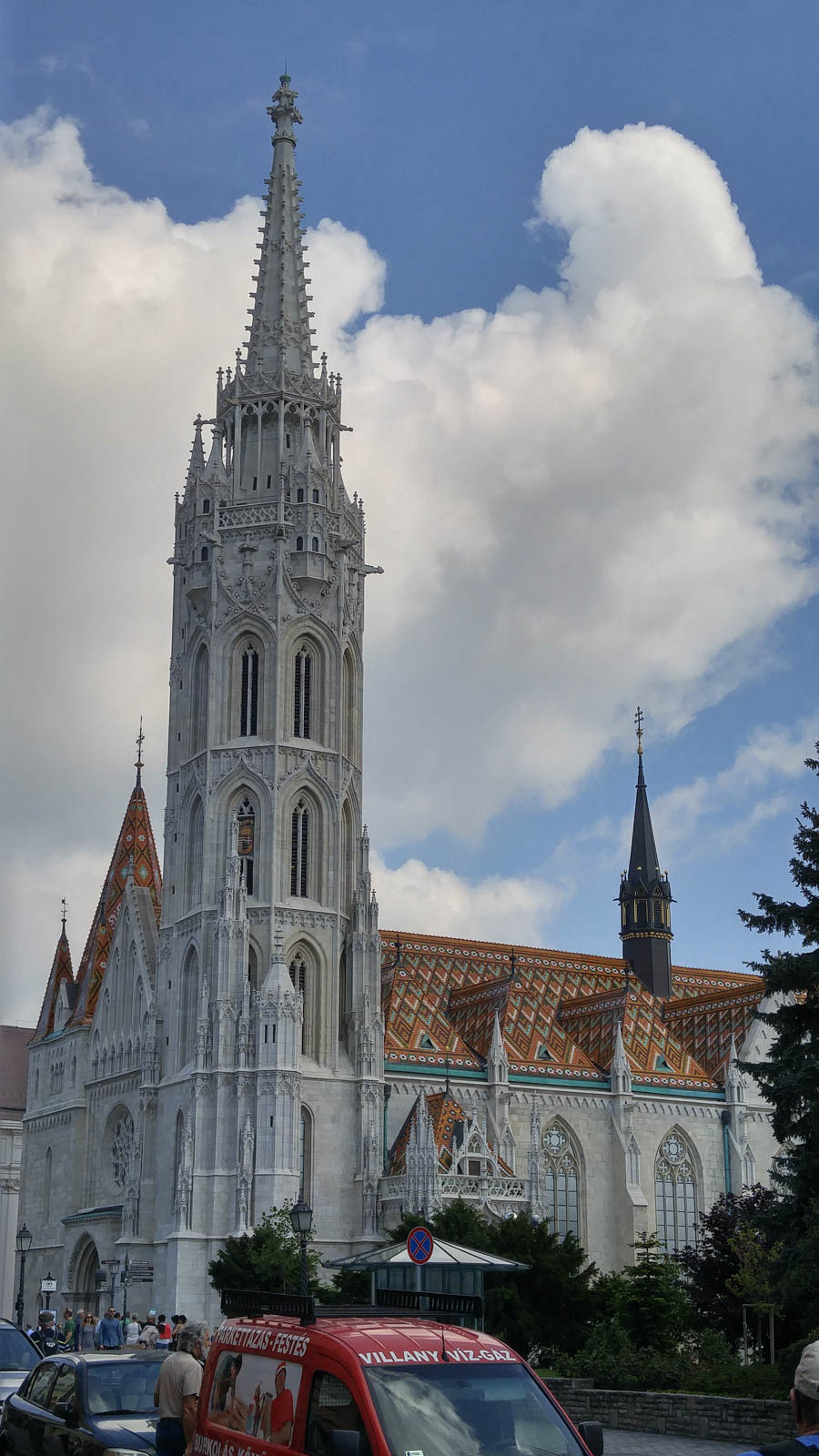
Love the roof
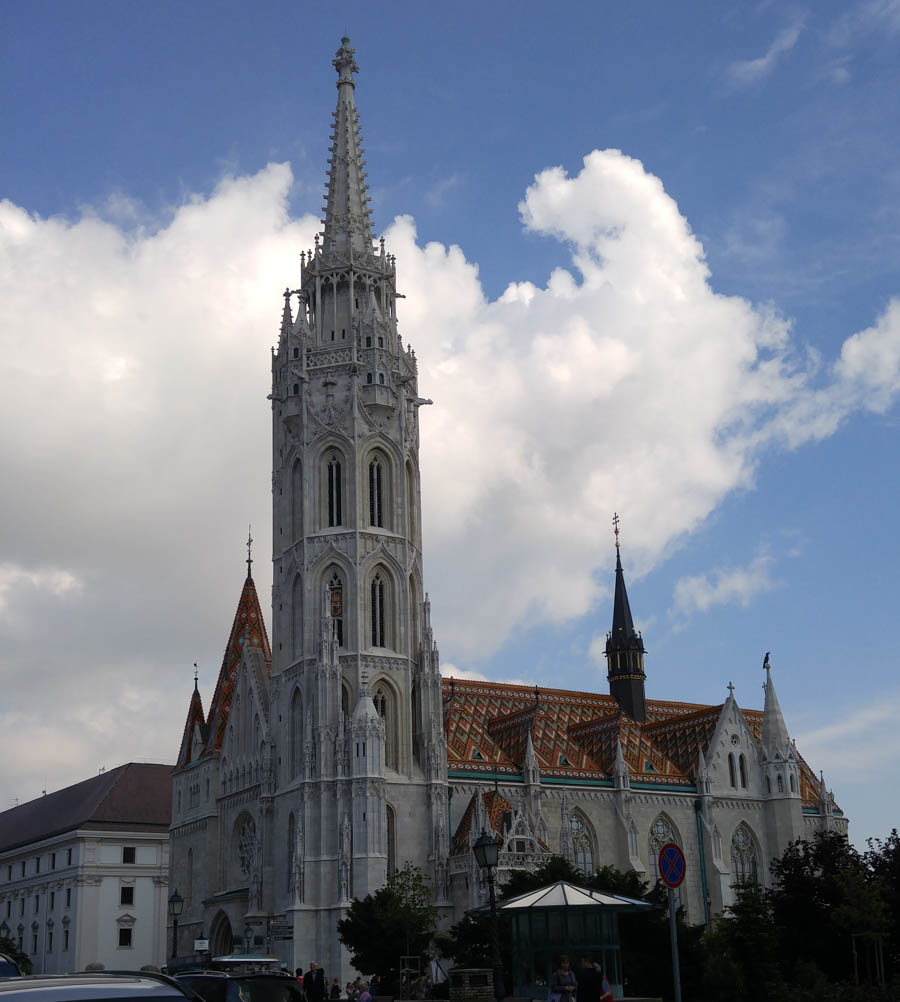

Just a few blocks from the river
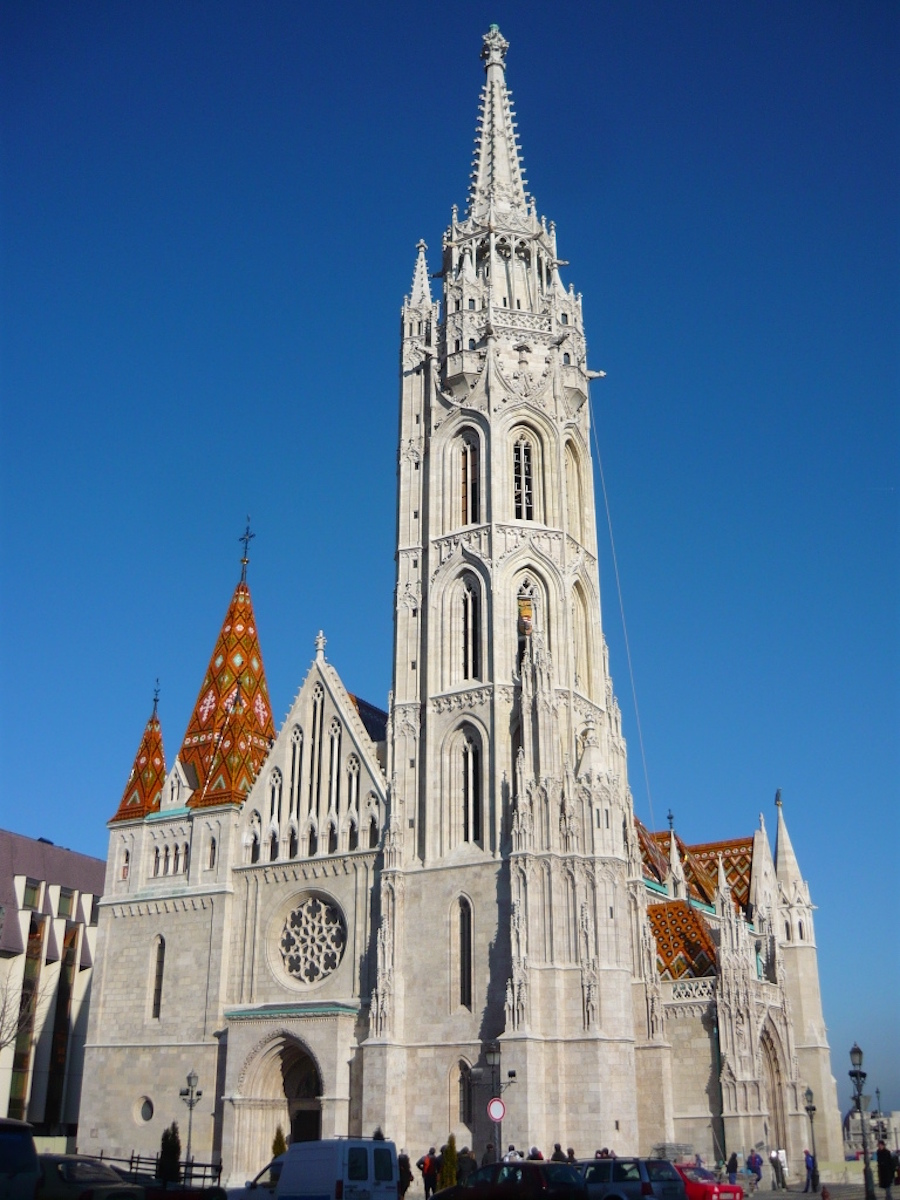
Did You Know? - Matthias Church is a Roman Catholic church located in Budapest, Hungary, in front of the Fisherman's Bastion at the heart of Buda's Castle District. According to church tradition, it was originally built in Romanesque style in 1015, although no archaeological remains exist.
The current building was constructed in the florid late Gothic style in the second half of the 14th century and was extensively restored in the late 19th century. It was the second largest church of medieval Buda and the seventh largest church of the medieval Hungarian Kingdom.
A thorough restoration programme was carried out from 2006 to 2013. Half of the HUF 9.4 billion cost was met by the government.
It is home to the Ecclesiastical Art Museum, which begins in the medieval crypt and leads up to the St. Stephen Chapel. The gallery contains a number of sacred relics and medieval stone carvings, along with replicas of the Hungarian royal crown and coronation jewels.
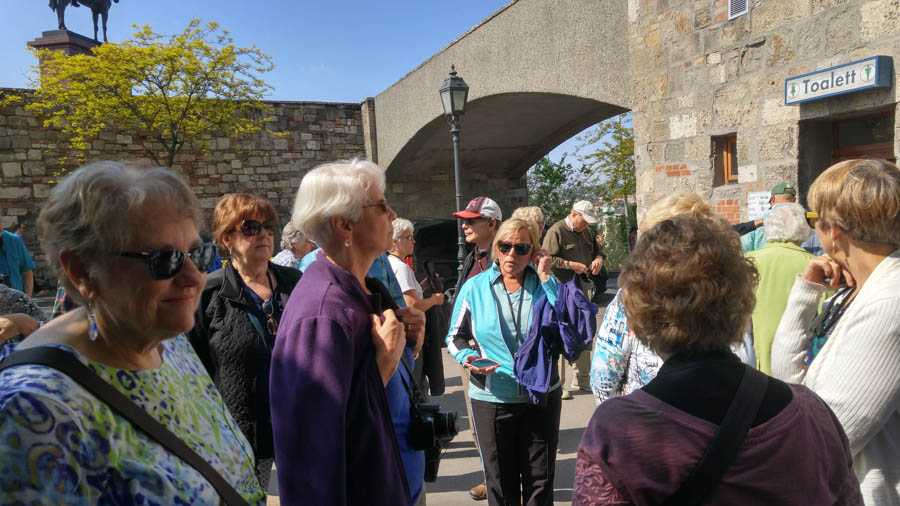
A much needed rest stop...

Houdini? The House of Houdini is a museum and performance venue located at 11, Dísz Square, within the walls of the Buda Castle in Budapest, Hungary. The museum houses the only collection of original Houdini artifacts in Europe.
Did You Know? - Located near Matthias Church and Fisherman’s Bastion, the Holy Trinity Statue can be found in the middle of Trinity Square. The column commemorates the people of Buda who died from two outbreaks of the Black Plague.
Holy Trinity Square by Matthias Church
Holy Trinity Statue and Square in Buda Castle
The Black Plague (causing the death of 30-60% of Europe’s total population) swept across Europe in 1691 and 1709, and many were buried in mass graves. Since people believed that erecting a column would keep away the plague, the foundation stone was laid in 1700.
Even though, the first pillar was ready by 1706, three years later the plague returned to Budapest, and therefore a new, larger plague pillar was planned in order to keep the plague away at any costs. Residents believed the Holy Trinity Statue did its job, as the plague never returned after 1709.
History of Holy Trinity Statue
The statue – made by the architect Ceresola Vereio and stone carver Bernát Ferretti – was finished in 1706. In 1709 the original column was removed and the Council of Buda decided on the erection of a much bigger, more impressive and more decorative Holy Trinity Column. The sculptor Fulop Ungleich made the column, which you can see today.
The carving on the top of the column represents the Holy Trinity. Below this the whole column is decorated with smaller statues depicting angels, cherub-like figures and larger statues of saints, while the central sculpture exhibits a biblical scene, showing King David praying to God to let his people avoid the outbreak of a plague.

Going inside

Ornate indeed!
Did You Know? - The pulpit of the church was built between 1890 and 1893 during the extensive reconstruction of the building. It was designed by Frigyes Schulek with the help of art historian Béla Czobor who contributed to the draft of the iconographic plan. The statues were carved by Ferenc Mikula, the abat-voix was made by Károly Ruprich.
The pulpit was built of sandstone, and the surfaces are entirely covered with Neo-Romanesque ornamental painting including the statues. There is a wrought-iron rail at the bottom of the steps. The Gothic Revival abat-voix, resembling a medieval tower, was carved of oak and the statue of the Good Shepherd on the top was made of linden. The platform of the pulpit is supported by an outer ring of arches and a massive central pillar.

Too bad the sun wasn't shining through it!

The cathedral was packed!
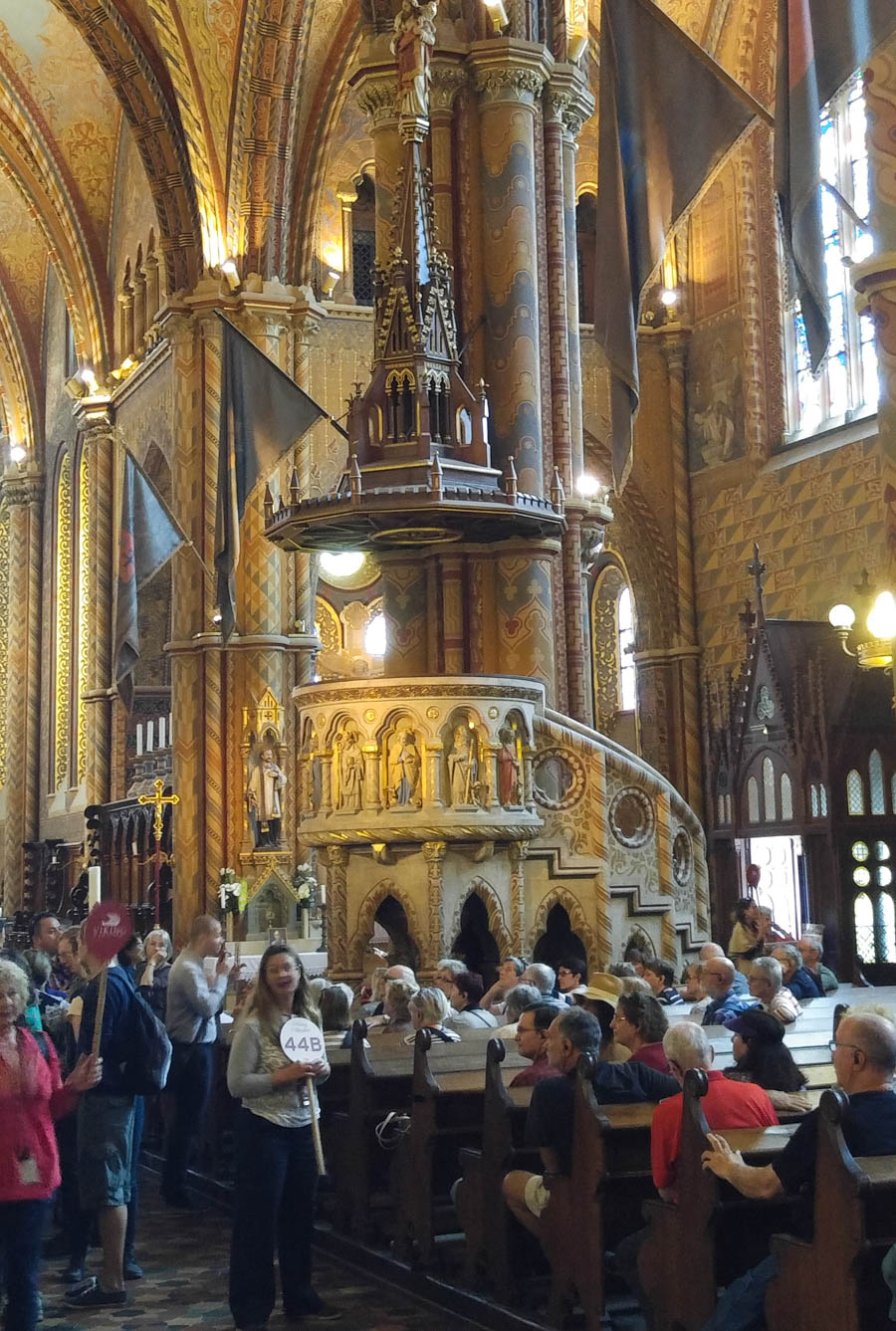
Our guide was with us the entire time
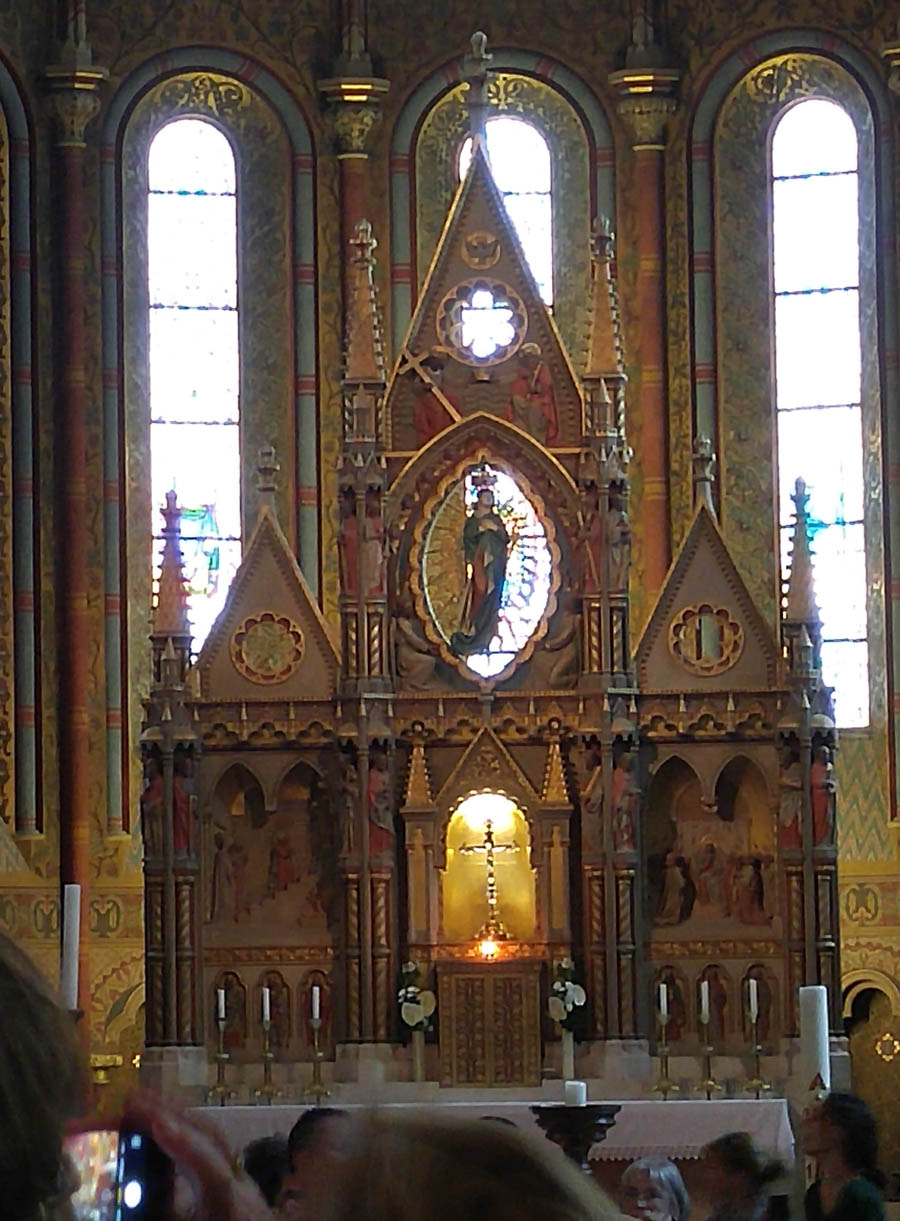
Amazing
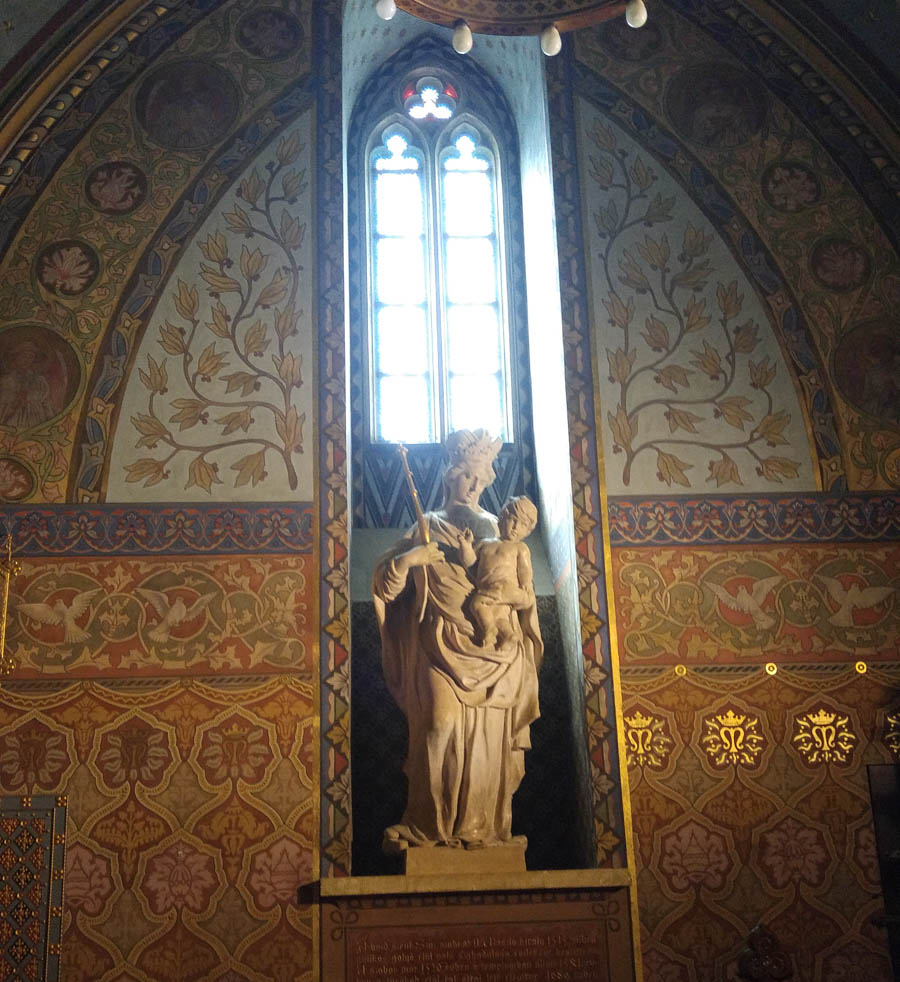
Fastastic statuary
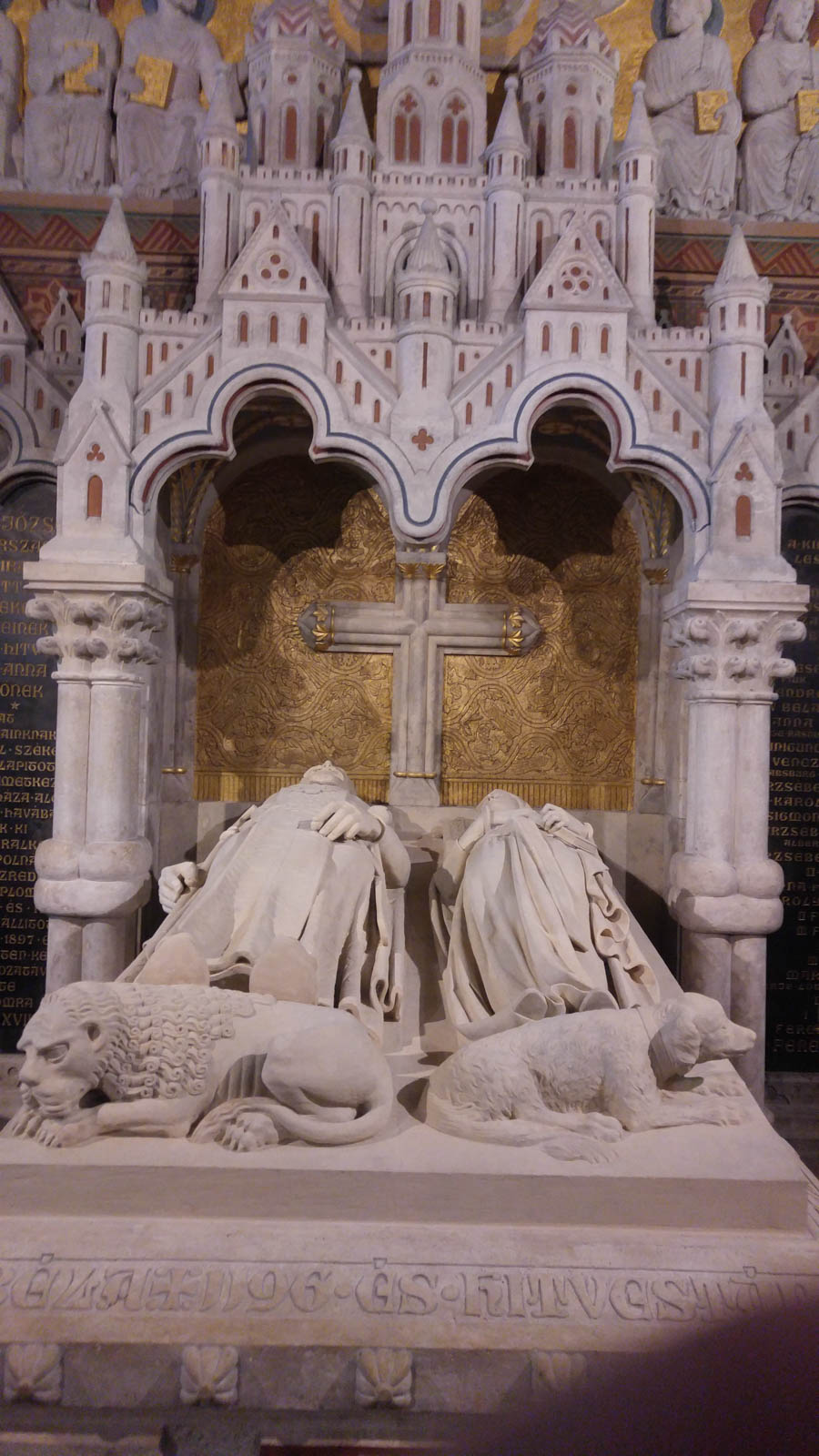
Nap time?
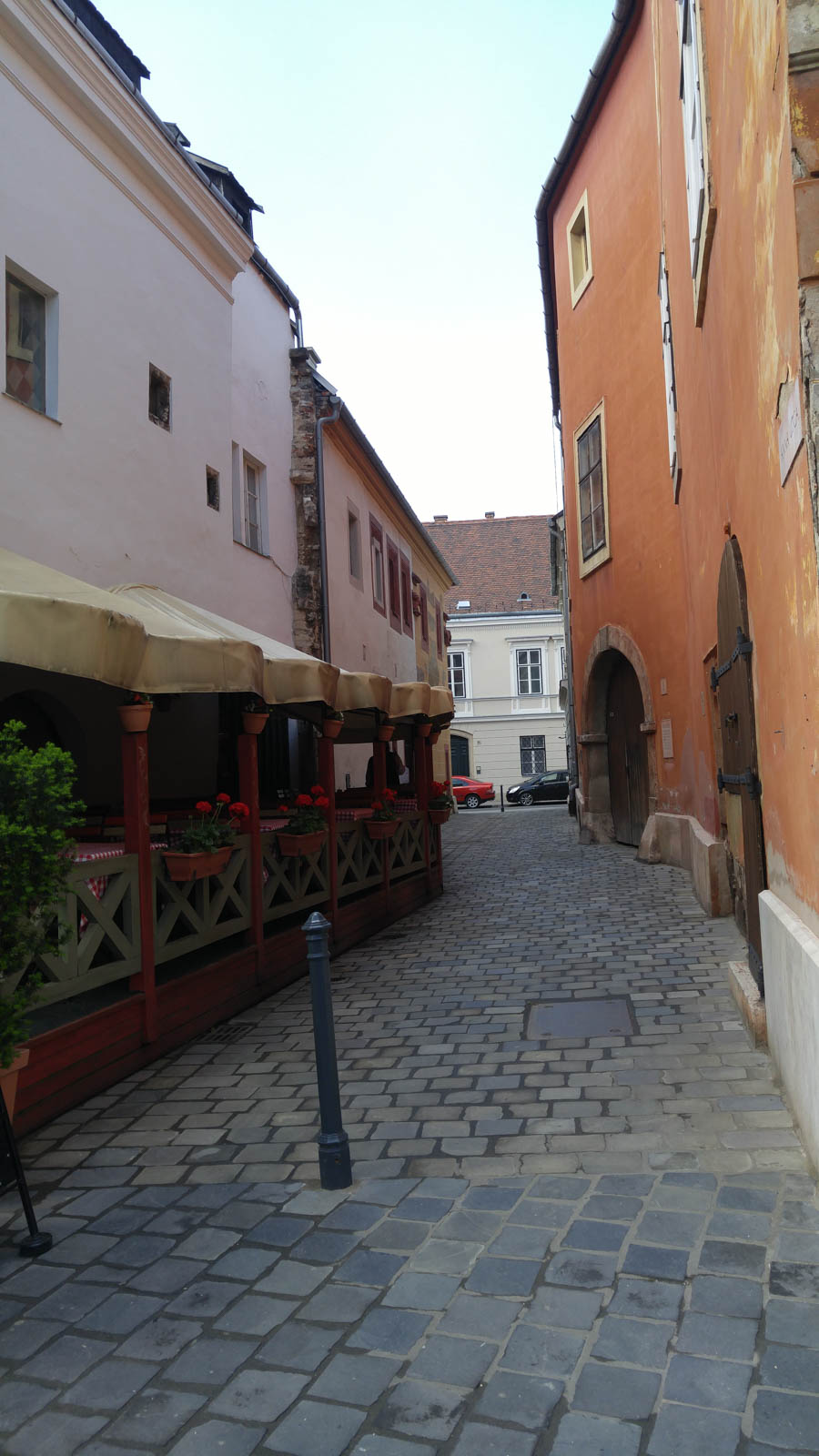
The narrow walkways are always interesting

Holy Trinity Column adjacent to he church
Did You Know? - The Council of Buda decided on the erection of a Holy Trinity Column in 1694 with the aim of protecting the people from the regular outbreaks of plague and in gratitude for its cessation. The foundation stone of the first Holy Trinity Column was laid in 1700. The statue - made by the architect Ceresola Vereio and stone carver Bernát Ferretti - was finished in 1706. In 1709 - in connection with another epidemic - this column was removed and placed in the suburbs of Újlak, and the magistrate decided on the erection of a bigger and more decorative Holy Trinity Column. The sculptor Fülöp Ungleich made the column of today, while the reliefs and the coat-of-arms are the works of Antal Hörger. The Column was inaugurated on 11th June 1713.
The statues on the cornice of the hexagonal obelisk are: Saint Roch showing his wounds, Saint John holding a cross, Saint Christopher holding the child Christ on his shoulders, Saint Augustin with a burning heart, Saint Joseph holding a lily, and Saint Sebastian with arrows in his body. There are three reliefs under the cornice: the first one depicts King David as he is praying repentantly, the second shows the horrors of the epidemic in Buda Castle, and the third one represents the Holy Trinity Column. Three coats-of-arms can be seen among the reliefs: one for the Emperor, one for the town of Buda and one for Hungary.
On the three outstanding rims over the six statues are the Virgin Mary, John the Baptist, and Saint Francis of Xaver. The upper part of the pedestal is decorated with angels' heads, and on the top there is the Holy Trinity group of statues: the Father with the scepter, the Son holding a cross and over them the Holy Spirit in the form of a dove.

Located on the church grounds
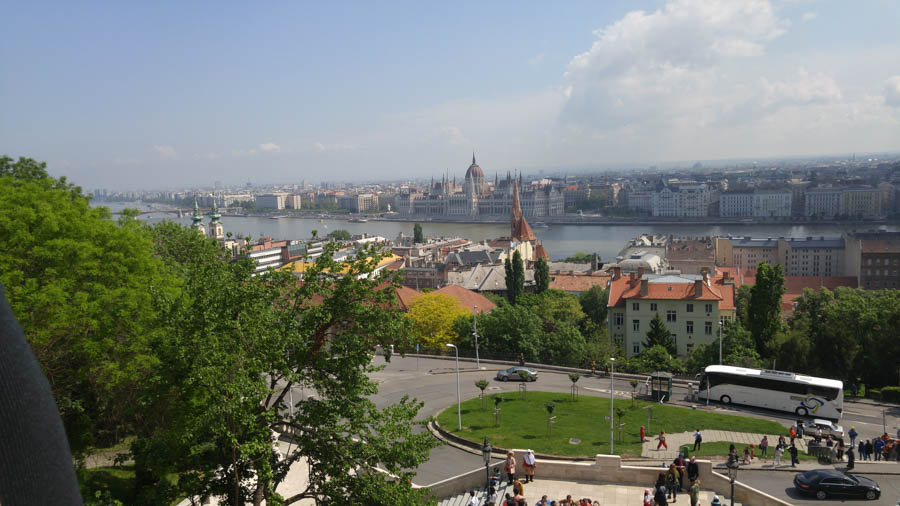
To the top of the hill to see the view

The Danube flows through the middle of town
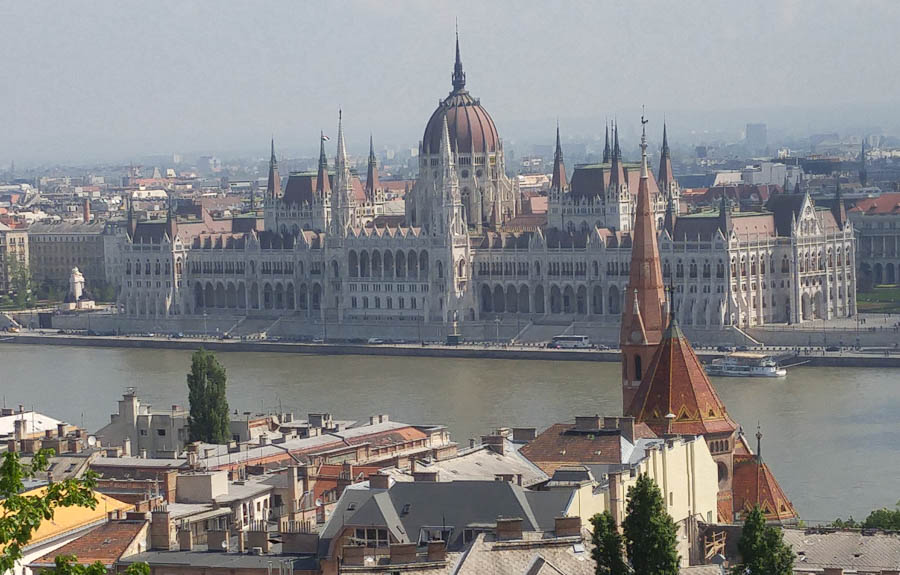
The Parliament Building is a prominent building in the town
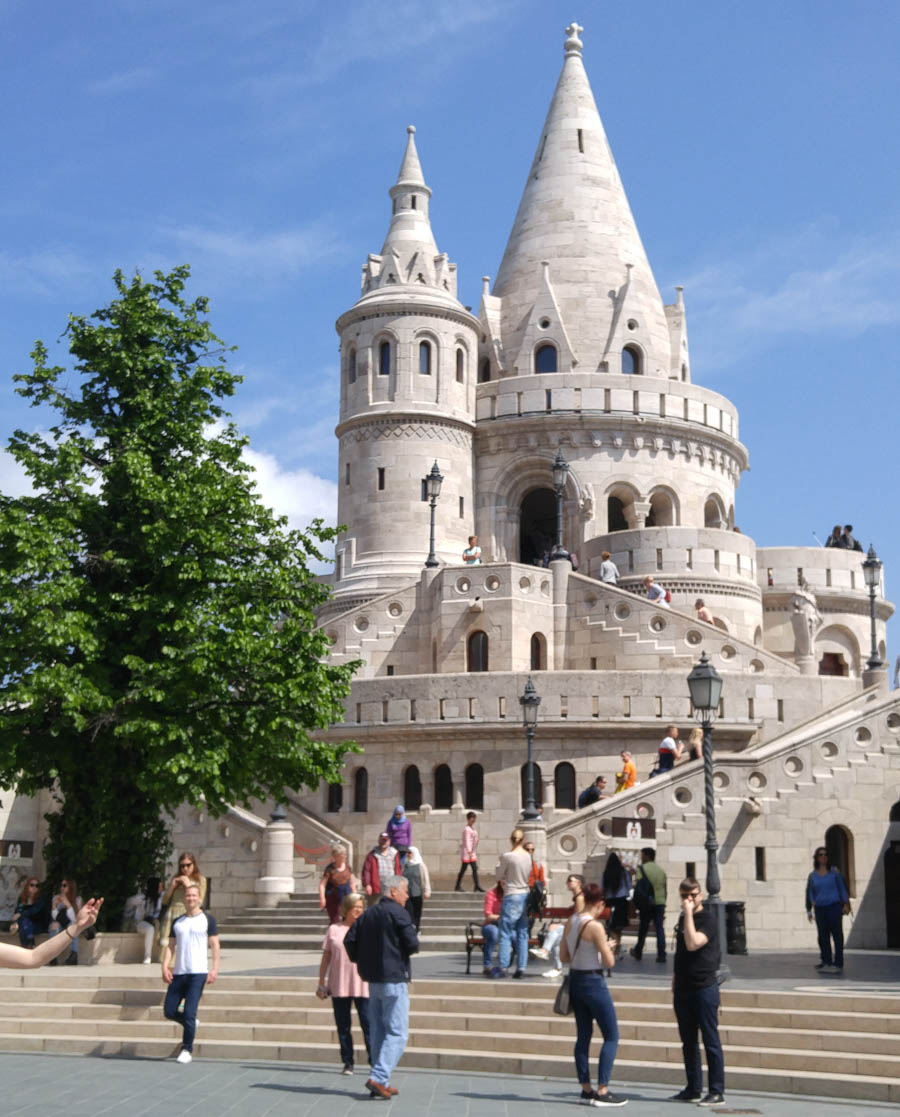
Fisherman's Bastion is located directly behind St. Matthais Church
Did You Know? - The Halászbástya or Fisherman's Bastion is a terrace in neo-Gothic and neo-Romanesque style situated on the Buda bank of the Danube, on the Castle hill in Budapest, around Matthias Church. It was designed and built between 1895 and 1902 on the plans of Frigyes Schulek. Construction of the bastion destabilised the foundations of the neighbouring 13th century Dominican Church which had to be pulled down. Between 1947–48, the son of Frigyes Schulek, János Schulek, conducted the other restoration project after its near destruction during World War II.

Did You Know? - The Buda side castle wall was protected by the fishermen's guild and this is the reason why it was called fishermen's Bastion. Other people say, it got the name from the part of the city, which lies beneath the tower.
The guild of fishermen was responsible for defending this stretch of the city walls in the Middle Ages. It is a viewing terrace, with many stairs and walking paths.
A bronze statue of Stephen I of Hungary mounted on a horse, erected in 1906, can be seen between the Bastion and the Matthias Church. The pedestal was made by Alajos Stróbl, based on the plans of Frigyes Schulek, in Neo-Romanesque style, with episodes illustrating the King's life.
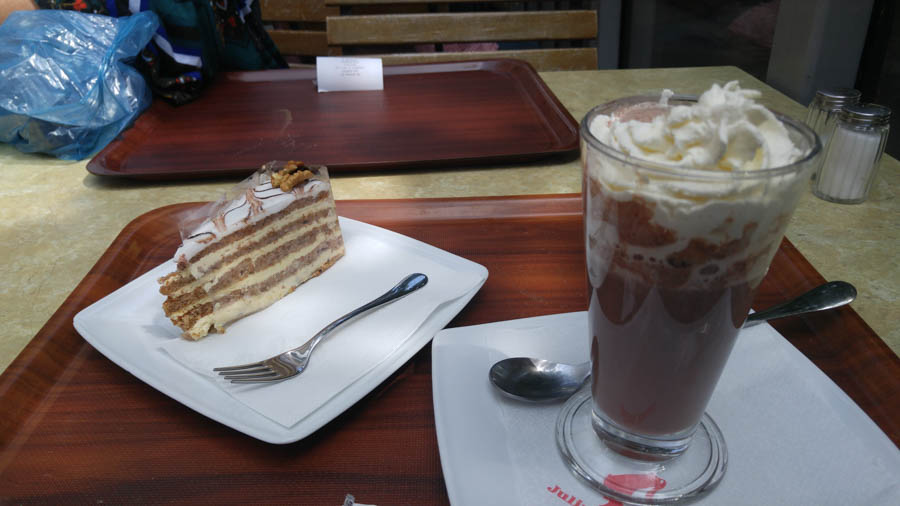
Stop for a quick snack!

Back into town...
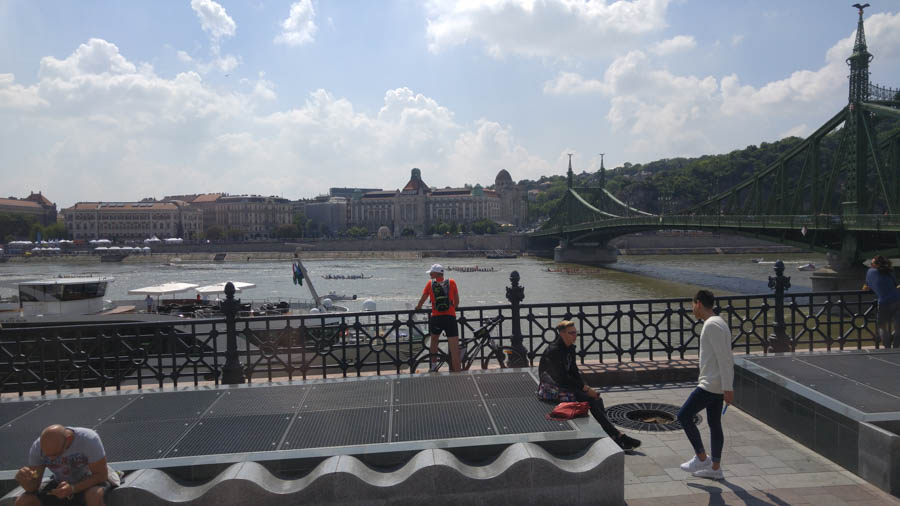
Time for a walk

Széchenyi thermal baths
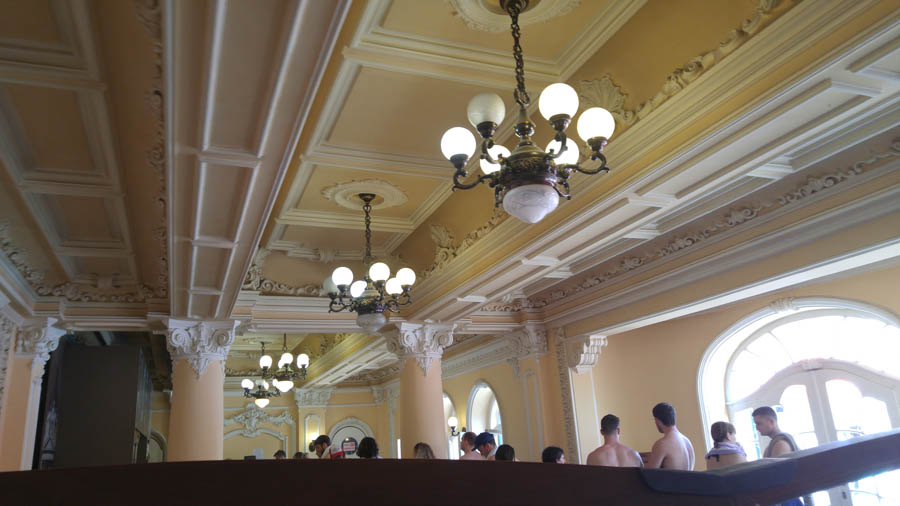
To the bath house
Did You Know? - In planning since the 1880s, the bath had originally been referred to as the Artesian spa (Artézi fürdő), but when it opened on 16 June 1913, it was officially named Széchenyi spa (Széchenyi gyógyfürdő) after István Széchenyi.
The bath, located in the City Park, was built in Neo-baroque style to the design of Győző Czigler. Construction began on 7 May 1909 with designs by architect Eugene Schmitterer. The pool construction cost approximately 3.9 million Austro-Hungarian korona. The built-up area was 6,220 square metres (67,000 sq ft). The attendance of spa was in excess of 200,000 people in 1913.
This number increased to 890,507 by 1919. At that time it had private baths, separate men and women steam-bath sections, and different men / women "public baths". The complex was expanded in 1927 to its current size, with 3 outdoor and 15 indoor pools. It is now possible for both sexes to visit the main swimming and thermal sections.
After the expansion, the thermal artesian well could not supply the larger volume of water needed, so a new well was drilled. The second thermal spring was found in 1938 at a depth of 1,256 meters (4,121 ft), with a temperature of 77 °C (171 °F). It supplies 6,000,000 liters (1,600,000 US gal) of hot water daily.[2] Between 1999 and 2009 the full reformation of the Széchenyi thermal bath took place within the confines of a blanket reconstruction.

Let's grab a suit and jump in!

So big you need a map!


Back into the traffic
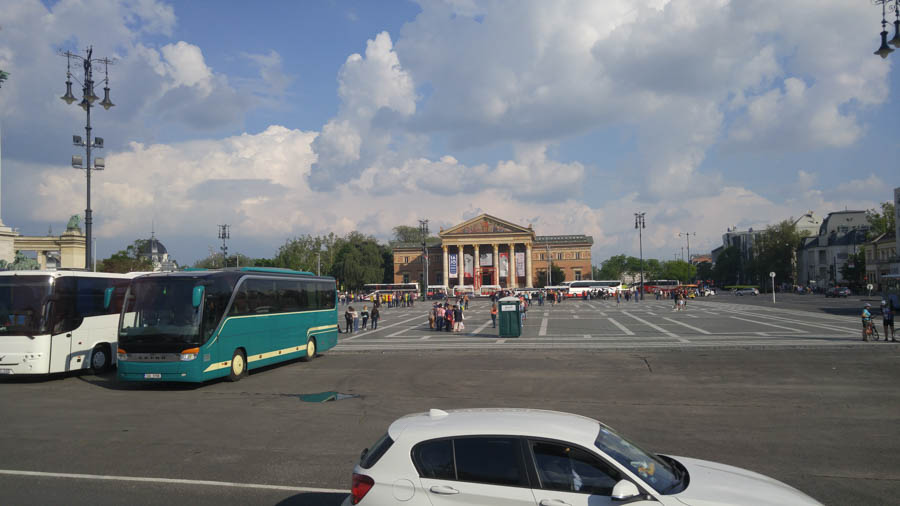
Plenty of parking adjacent to he sights
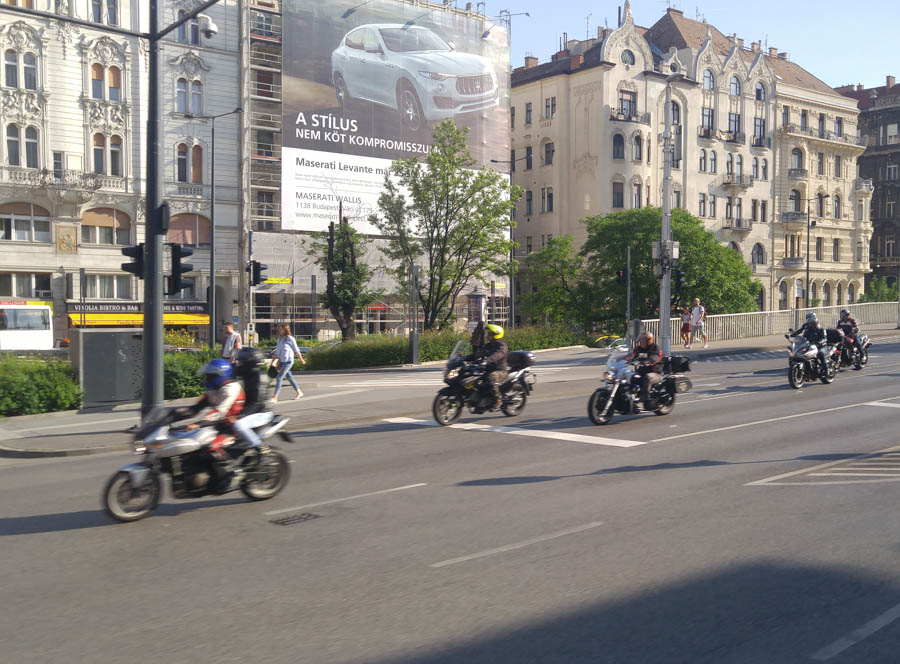
The bikers are out

Back to the ship for an evening sail on the river

Time for dinner before we move

A concert is underway
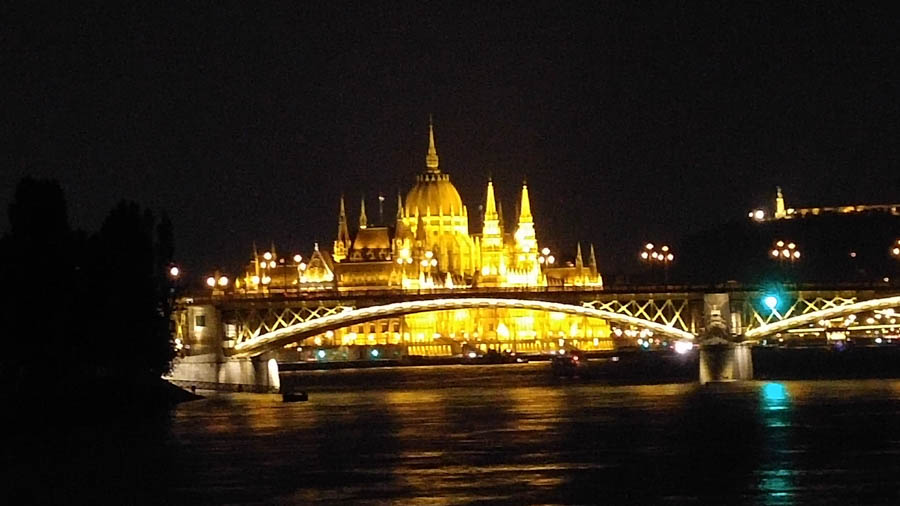
The Parliament was just beautiful when lit up
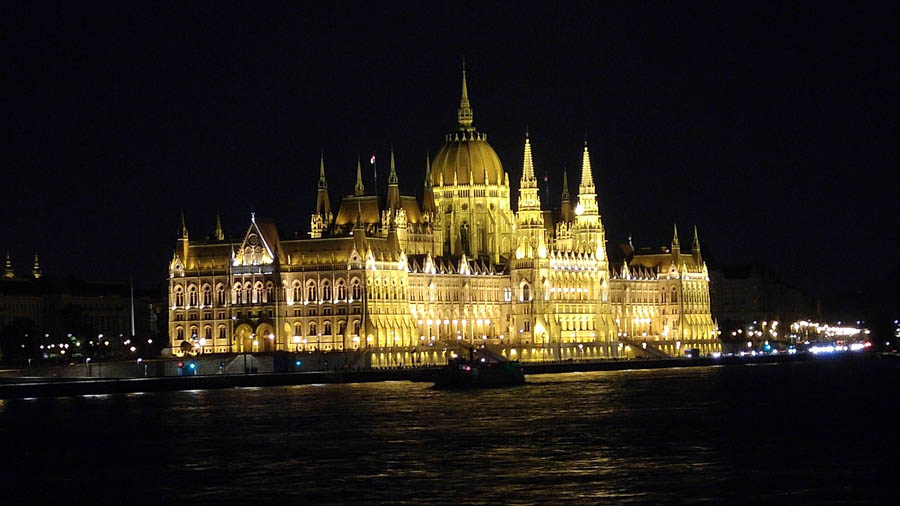
Looks like a jewelry box

Other ships had the same idea!

The bridges were also lit with bright lights
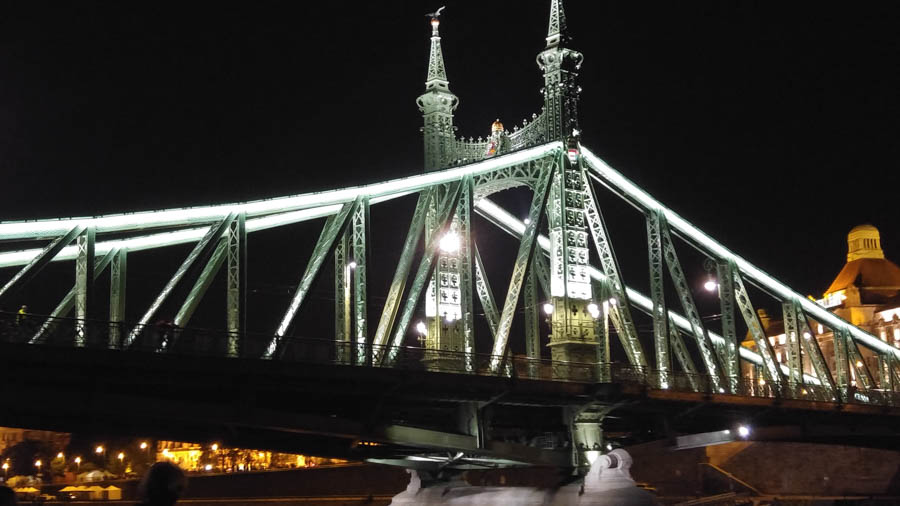
As we pass under the low hanging bridges

Heading back to our mooring area

Good night Budapest

We Tour Budapest And Leave The
Ship Tomorrow (Page Twenty)